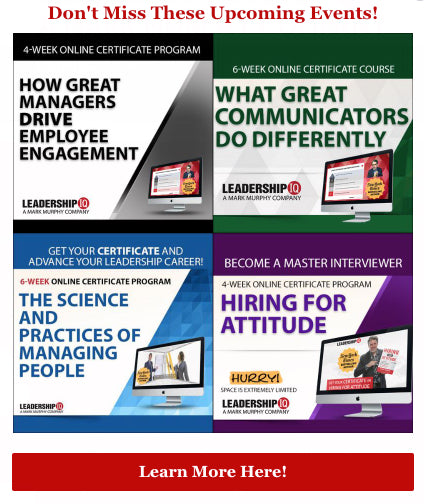Don't Bring Your Boss Only One Solution To A Problem
This article originally appeared on Forbes by Mark Murphy, Founder of Leadership IQ
Imagine you discover a significant problem at work; the kind you need approval from your boss to solve. So you work up a proposal, bring it to your boss, and wait for approval. You’re a problem solver, and that’s what problem solvers do, right? You find a problem and generate a solution.
But imagine that instead of giving your proposal the green light, the boss says “that’s a good try, but I’d like to go in a different direction.”
Now what? Many employees will be pretty irritated. (I’ve seen more than a few employees pout, backstab, become passive-aggressive, and even sabotage the boss’ solution). After all, you just created a smart proposal, with a good solution, and the only thing the boss had to do was say “yes” and let you do your job. On paper, this should have been a slam-dunk.
So what went wrong? First, we’ve got to recognize the natural desire to feel useful (something which bosses do share). Many bosses, like people in general, don’t want to be a rubber stamp; they want to put their own unique stamp onto a solution so that later they can reflect on this masterpiece and exclaim “yeah, I did that!”
But when we bring our boss just one solution, we’re essentially telling them ‘just rubber stamp this, don’t think too hard, just sit there looking pretty and I’ll go do the real work.’ And that’s not likely to sit well with most self-respecting bosses.
Want to Learn More About "Managing Up"?
Click Here
Second, when we’re given only one option from which to choose, it doesn’t really feel like we’re ‘choosing.’ If you’re car shopping, and the salesperson says “buy this one model or get out,” most of us would choose to ‘get out.’ The same principle applies to our bosses. When they get just one option from which to choose, it doesn’t really feel like they’re choosing. Therefore, many bosses will dismiss that one option and instead create their own.
Third, when we generate one solution, we often get emotionally wedded to that solution. After all, if we thought our solution was anything less than the absolute right solution, we would have proposed something different. But when we get wedded to that one solution, we can suffer from tunnel vision. Maybe the boss’ idea really was a better one. Maybe they looked at the problem differently. And maybe if we hadn’t been so emotionally attached to our one solution, we would have been the ones to see that better idea.
So what’s the answer here? Simple; bring your boss at least two solutions. If you bring your boss 2 or 3 solutions, three very important things happen.
First, your boss gets to put their unique stamp on the situation. You’re not asking them to rubber stamp just one solution, you’re asking them to choose. And choosing is a very important leadership activity.
Second, your boss doesn’t feel like one particular agenda is being shoved down their throat. They’re the masters of their own fate. They’re in control. And that feels really good.
Third, your creative mind greatly expands when you let go of that fixation on one solution and instead force yourself to think of 2 or 3 solutions. Just by breaking that emotional bond to your original idea, you can shed tunnel vision, think outside the box, approach the problem from a different angle, and more. It’s a remarkably freeing mental exercise.
Now, when you bring your boss 2 or 3 solutions to that problem, your boss is a lot more likely to take one of your ideas and tell you to “make it so.” And you’re a lot less likely to get irritated in the unlikely event that your boss says “that’s a good try, but I’d like to go in a different direction.”
Finally, I occasionally hear from someone who says “Mark, this is just manipulating the boss.” It’s not. If you think of your boss as you would think of a client/customer, it changes your perspective dramatically. What the cynic calls manipulation, I call offering great service. For example, no management consultant in their right mind would storm into their client’s office and say “this is the only solution, we’re totally inflexible, take it or leave it.” If you want to buy an iPhone, you can choose colors, storage, and size. The same goes for cars, computers, restaurants, hotels, and pretty much everything else. We are a very long way from the days of Henry Ford saying “Any customer can have a car painted any color that he wants so long as it is black.”
So, just think about your boss like you would think about an important client/customer. You should give them some choice, allow them to participate in the process, and think so creatively that you give them the best possible solutions.
Mark Murphy is the founder of Leadership IQ, a New York Times bestselling author, a sought-after speaker, and he also teaches a series of weekly webinars for leaders.







